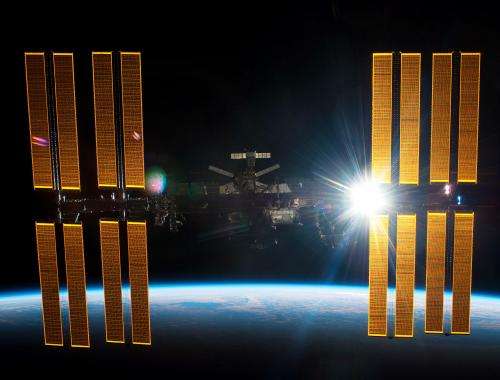Year-long missions could be added to space station manifest

Special crews on board the International Space Station will stay in space for year-long missions instead of the usual six-month expeditions, according to a report by the Russian news agency Ria Novosti.
"The principal decision has been made and we just have to coordinate the formalities," Alexei Krasnov, the head of Roscosmos human space missions was quoted, saying that the international partners agreed to add the longer-duration missions at the International Astronautical Congress in Italy this week.
This confirms rumors from earlier this year, and pushes ahead the aspirations of Roscosmos to add longer missions to the ISS manifest.
The first yearlong mission will be "experimental" and could happen as early as 2015.
"Two members of the international crew, a Russian cosmonaut and a NASA astronaut will be picked to carry out this yearlong mission," Krasnov said, adding that planning for the missions has already been underway.
"If the mission proves to be effective, we will discuss sending year-long missions to ISS on a permanent basis," he said.
For years, the Russian Space Agency indicated that they wanted to do some extra-long-duration mission tests on the ISS, much like the Mars 500 mission that was done by ESA and Russia in 2010–2011 which took place on Earth and only simulated a 500-day mission to Mars.
Since NASA's long-term plans now include human missions to Mars or asteroids, in April of this year, Universe Today asked NASA's associate administrator for the Science Mission Directorate, John Grunsfeld about the possibility of adding longer ISS missions in order to test out – in space—the physiological and psychological demands of a human Mars mission. At that time, Grunsfeld indicated longer missions wouldn't be necessary to do such tests.
"A 500-day mission would have a six-month cruise to Mars and a six-month cruise back," he said. "When we send a crew up to the ISS on the Soyuz, they spend six months in weightlessness and so we are already mimicking that experiment today."
However, a year-long mission on the ISS certainly would provide a better rubric to test the longer-term effects of spaceflight and time away from Earth.
This, of course, won't be the first year-long missions in space. Russian cosmonaut Valery Polyakov spent over 437 consecutive days in space on the Mir Space Station, from January 1994 to March 1995.
For the Mars 500 mission, six volunteers from Russia, Europe and China spent 520 days inside a capsule set up at a research institute in Moscow.
Source: Universe Today


















